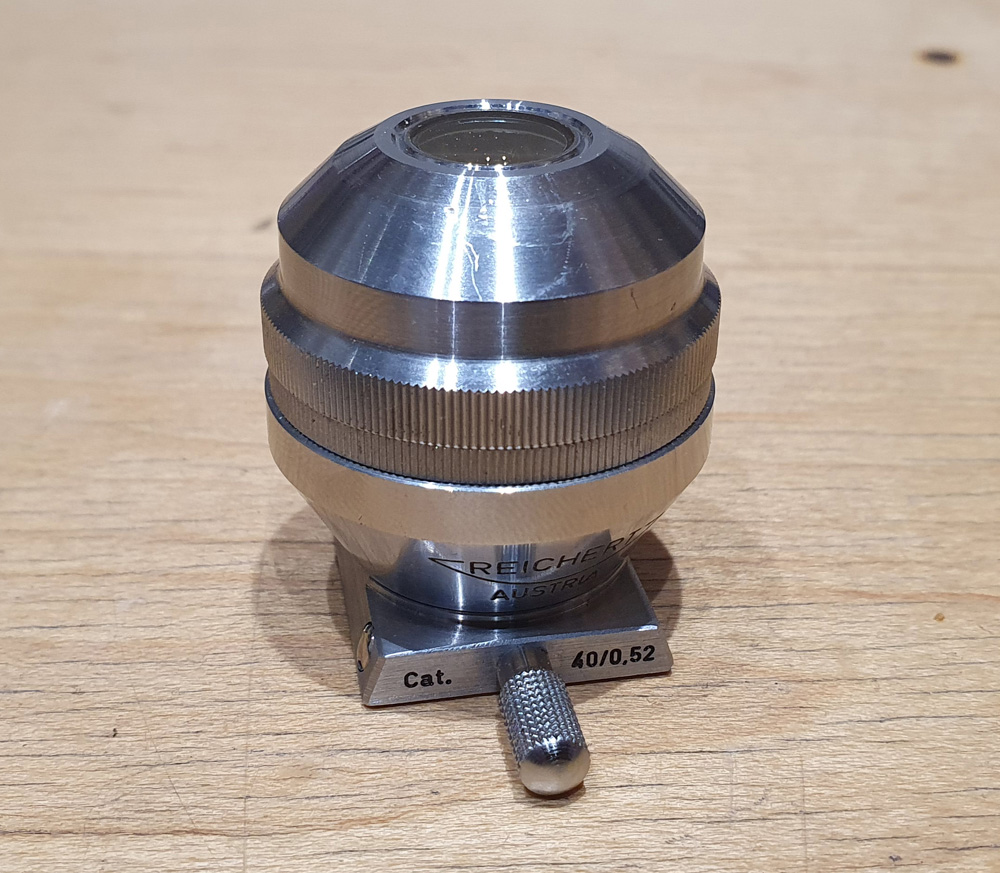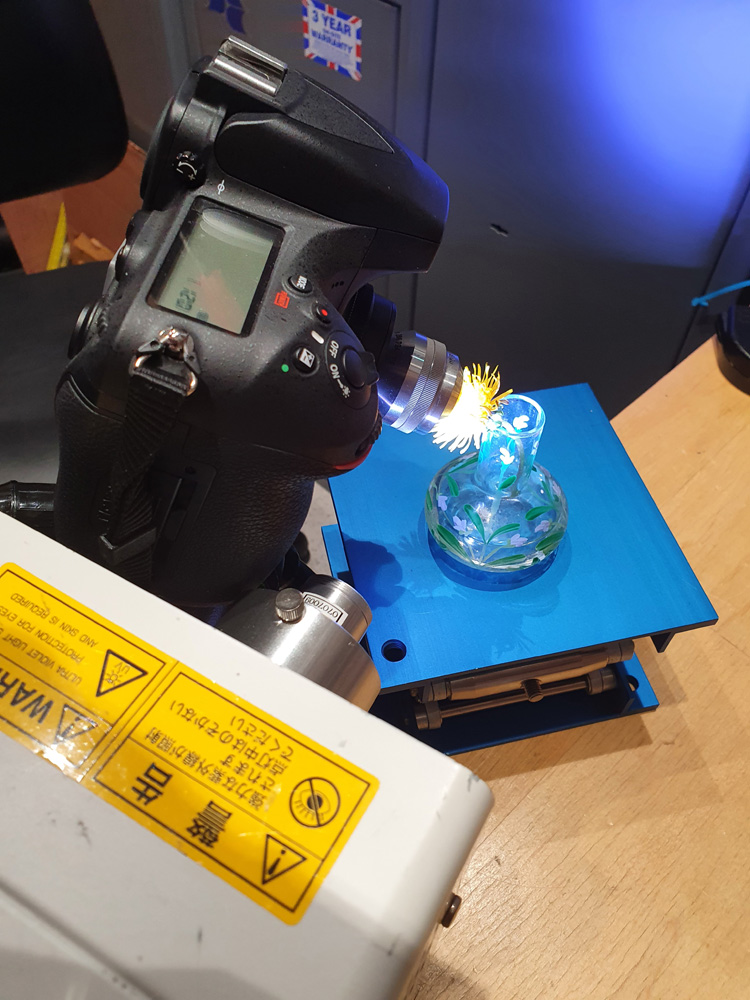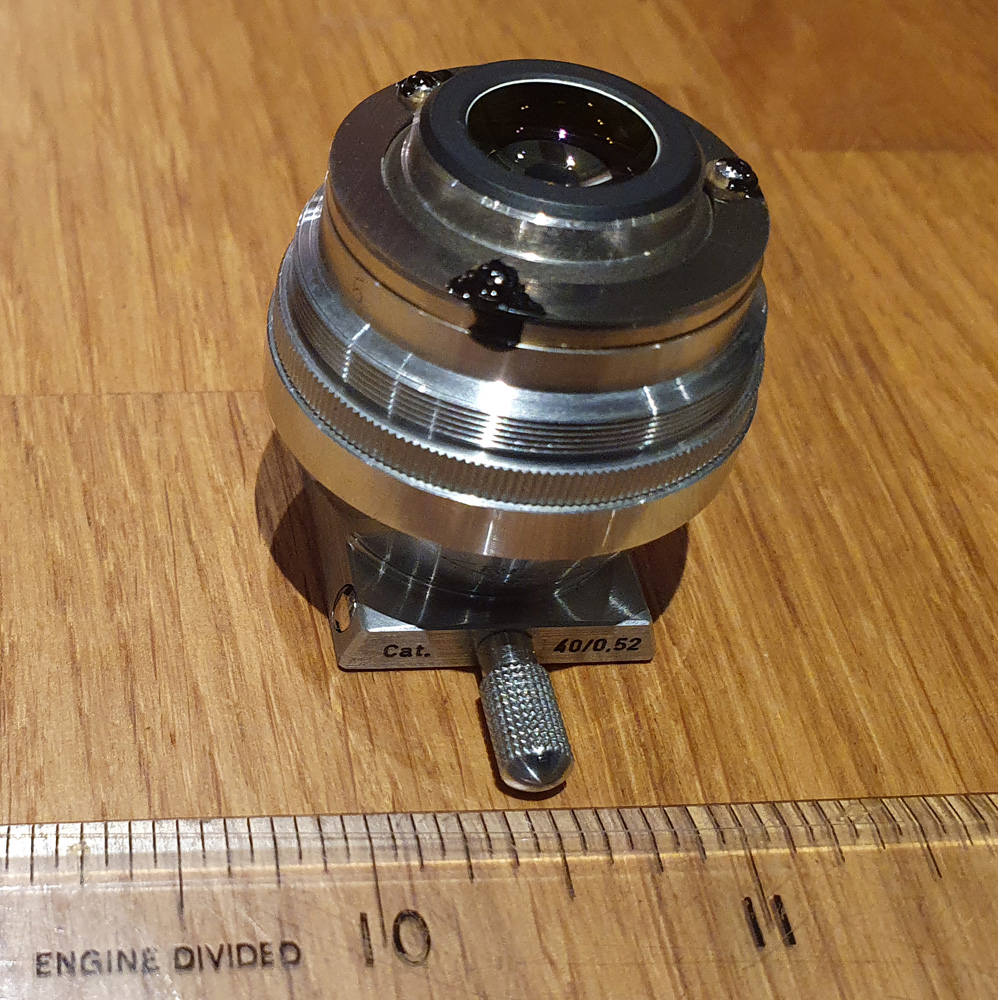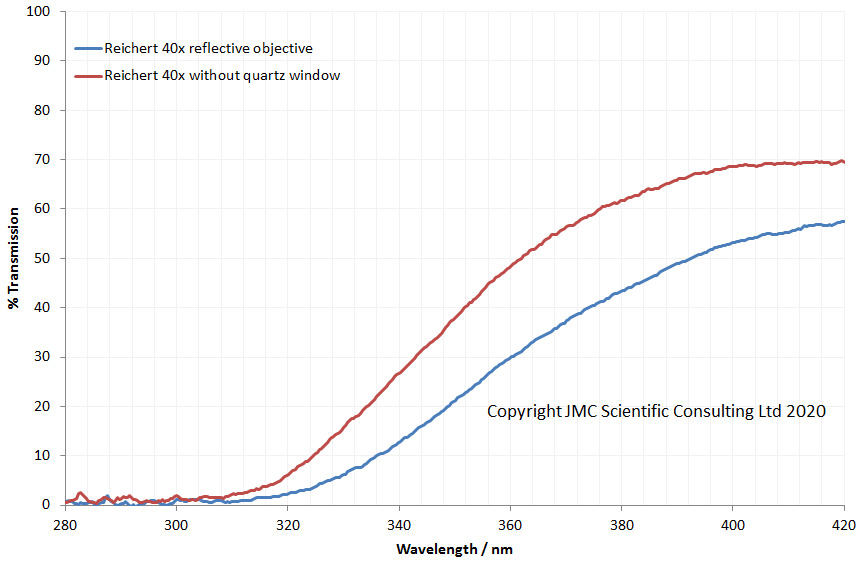I’ve recently been doing a bit of microscopy (bringing an old Olympus BHB microscope back from the grave – Project Beater), and while buying bits for it I came across an odd objective lens – the Reichert 40x reflecting objective. I was the only person to bid on it, and a few days later it arrived. It’s a funny little thing. It has a dovetail mount for use on a Reichert microscope, but that mount unscrews to reveal a standard RMS screw thread. Here’s the lens.

In theory it should be useful for multispectral imaging, and I was wondering what it’d be like for UV photography. I mean, what could possibly go wrong?? On the lens it says 250/1.5Qu, which as I understand it means it’s meant for a tube length of 250mm and quartz coverslip of 1.5mm. I mounted it on a range of extension tubes to get me out to 250mm, and I could see….. absolutely nothing, couldn’t get any focus at any distance. Back to basics, about 10mm extension and straight on to my UV modified d810. Amazingly, moving it back and forth I could see something come in and out of focus. Very quickly in and out of focus. Very, very quickly. Subject is a Dandelion and lighting using my Hamamatsu LC8 200w xenon lamp and collimating lens, setup shown below.

And what did it show? Here is a UV image taken with it, full frame (no cropping) and whitebalanced in Darktable. I’ve upped the contrast and boosted the saturation slightly (and reduced the size for sharing), but other than that its is unmodified.

This is part of the style of the Dandelion, showing some pollen grains, with another part of the flower out of focus towards the right hand side of the image. Pretty trippy stuff, with some crazy reflections and flare.
There doesn’t seem to be much info on these online, but there was this; “Reichert 40/0.52 (catalog number), 250/1.5 Qu is a special purpose objective for Zetopan MeF-1 and MeF-2 Inverted Metallurgical Microscopes. This objective designed to use with heating stage. Because of the extreme high temperature involved (up to 1700° C) the sample chamber is water cooled and observation done in a vacuum. The window to the chamber is of 1.5mm quartz glass, hence the 1.5 Qu nomenclature. The front lens of objective is very large in diameter to achieve a relatively large numerical aperture (0.52) given the exceptional working distance the heating stage required. This objective has concave mirror at the front end; it is cardioid-type objective configuration. It has 20.2mm threads sizes – RMS (Royal Microscope Society) standard and comes with 24mm dovetail sliding bracket.” The front part of the lens unscrews, to show the lens itself.

The front element of the lens is a concave window, with a dark spot in the middle. I suspect the underside of this is mirrored, and that the light then bounces off a second, larger mirror before passing out of the rear of the lens. This thing is tiny, and an amazing piece of engineering.
How does it transmit the UV light? I had high hopes here, so measured the transmission spectra in the UV (with and without the front quartz window in place), and got this…..

Hmmm, not as good as I’d hoped. While suitable for UVA, it’s not good for UVB imaging. In this case the thick quartz coverslip described on the side of the lens indicates it is aimed at high temperature work rather than UV.
Will it be useful? I’m struggling to think how I’d use this for photography. Lighting is a nightmare, and fitting a hood would be ‘challenging’ to say the least. While it’s marked as being designed for a 250mm tube length, I had no joy with long extensions. Depth of field is essentially zero, so stacking would be a must. I am planning on building a photomacrography rig in the future, and when I have stacking capability, I shall have another play with it. However despite all this, it is a cool little lens and a piece of optical history, so thought I would share what I had found. I hope you enjoyed it, and if you want to know more about this or any other aspect of my work, you can reach me through my ‘Contact‘ page.
